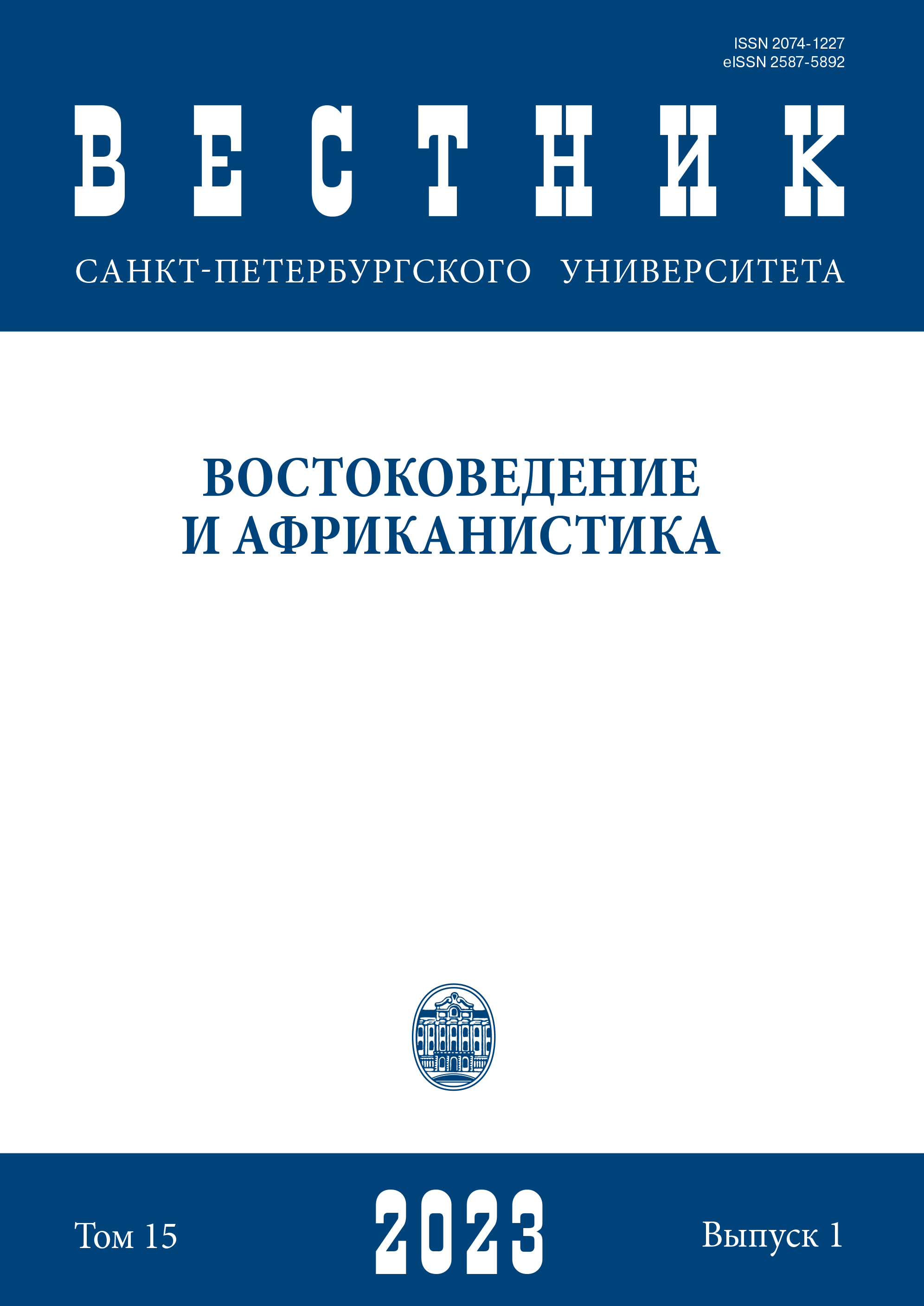Ancient Chinese Ideas about the World of Dead Huangquan (According to Pre-Han and Han Texts)
DOI:
https://doi.org/10.21638/spbu13.2023.103Abstract
It is generally accepted that developed ideas about the World of Dead appear among the Chinese with the spread of Buddhism. Nevertheless, based on the data of material and spiritual
culture, it can be assumed that already in the Paleolithic and, especially, in the Neolithic on the territory of Ancient China, there were a number of more or less developed models of the afterlife. One of its oldest names, recorded by written Chinese monuments, is 黄泉 Huangquan, the literal meaning of which is ‘Yellow Wellspring’. The character 泉 quan means the water flowing in a mountain cave or grotto, coming out at the base of the mountain. Its meaning is consistent with the religious ideas of different peoples: the archetype of the mountain is known as the place of birth and departure of ancestors, a tunnel connecting the worlds of the living and the dead; water as a boundary separating these worlds is also a universal motif of the World Culture. The semantics of the yellow color of the Chinese Hades can also be reconstructed by analyzing the sign 黃 huang. The pictogram depicts a man with a large swollen belly. Additional information from written monuments suggests that the yellow color was originally associated with illness and death, and by coincidence with the color of the earth, where the dead “went”, it began to determine the “border” wellspring. After the death of a person, the soul 魄 po in the form of 鬼 gui goes to the underworld of the ancestors — the place from which it appeared at the time of birth. According to the author, this knowledge is connected with the tradition of the center (Yellow River basin). An analysis of the texts of the pre-Han and Han periods makes it possible to conclude that Huangquan was understood as: 1) a designation of the end of a person’s life; 2) a designation of the lower limit in the vertical World Model; 3) a sacred place where 氣 qi is stored — the birth and death of ten thousand things.
Keywords:
Huangquan, Jiuquan, the World of Dead, soul-po
Downloads
References
Downloads
Published
How to Cite
Issue
Section
License
Articles of "Vestnik of Saint Petersburg University. Asian and African Studies" are open access distributed under the terms of the License Agreement with Saint Petersburg State University, which permits to the authors unrestricted distribution and self-archiving free of charge.





